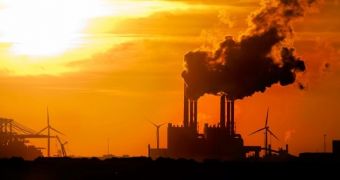Researchers with the University of East Anglia in the United Kingdom are not exactly thrilled to announce that they have discovered three-knew man-made ozone-destroying gases that were previously unknown to the scientific community.
As detailed in a paper published in yesterday's issue of the journal Atmosphere, these three newly discovered ozone-destroying gases are two chlorofluorocarbons (CFCs, for short) and one hydrochlorofluorocarbon (HCFC).
Although they do have what it takes to contribute to the destruction of our planet's ozone layer, the three gases identified by the University of East Anglia scientists are argued not to be a threat, at least not for the time being.
According to Click Green, this is because they are present in Earth's atmosphere in fairly low concentrations, and are therefore highly unlikely to cause major damage to the ozone layer in the immediate future.
However, should they start to build up in the atmosphere in the years to come, it might not be such a bad thing to start worrying, identify their source, and try to regulate and limit their release, the University of East Anglia specialists say.
Interestingly enough, the discovery of these two CFCs and the one HCFC comes shortly after, earlier this year, the scientific community documented the presence of four other previously unknown ozone-destroying gases in the atmosphere.
“We have now identified another two CFCs and one HCFC, although these have much lower concentrations than the previous ones,” explains Dr. Johannes Laube with the University's School of Environmental Sciences.
Furthermore, “It is therefore unlikely that they will pose a threat to the ozone layer. They do however strengthen our argument that there are many more gases out there and the sum of them may well have an impact.”
“All seven gases were only around in the atmosphere in very small amounts before the 1980s, with four not present at all before the 1960s, which suggests they are man-made. Where these new gases are coming from should be investigated,” adds scientist Corinna Kloss with the Jülich Research Centre in Germany.
Although they are yet to confirm this, the scientists who worked on this research project believe that these newly identified man-made and potentially dangerous gases that are floating about over our heads might originate from industrial solvents, feedstock chemicals, or refrigerants.
The University of East Anglia researchers came across them while comparing air samples collected on the ground in Tasmania and samples obtained with the help of aircraft between 1978 and 2012.

 14 DAY TRIAL //
14 DAY TRIAL //